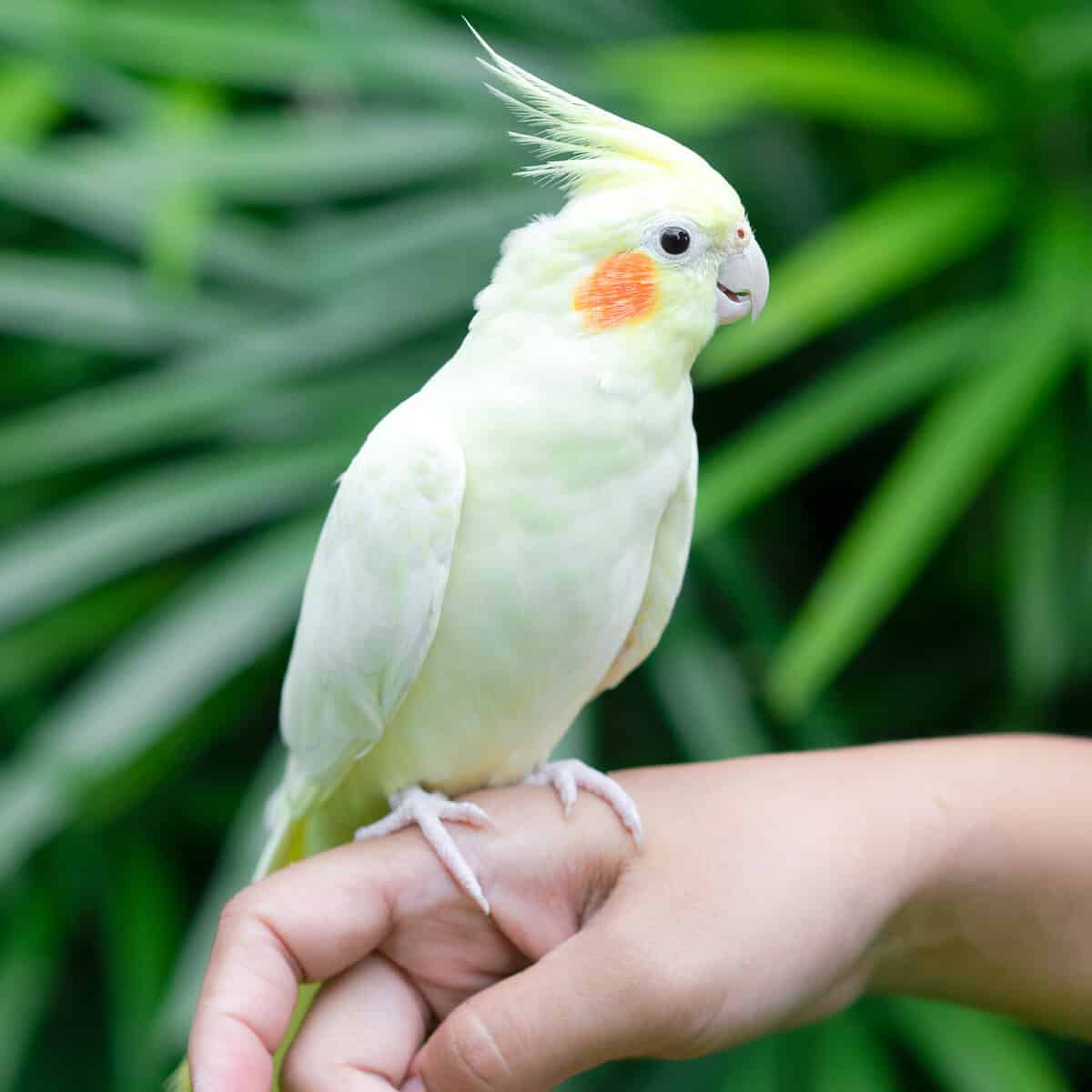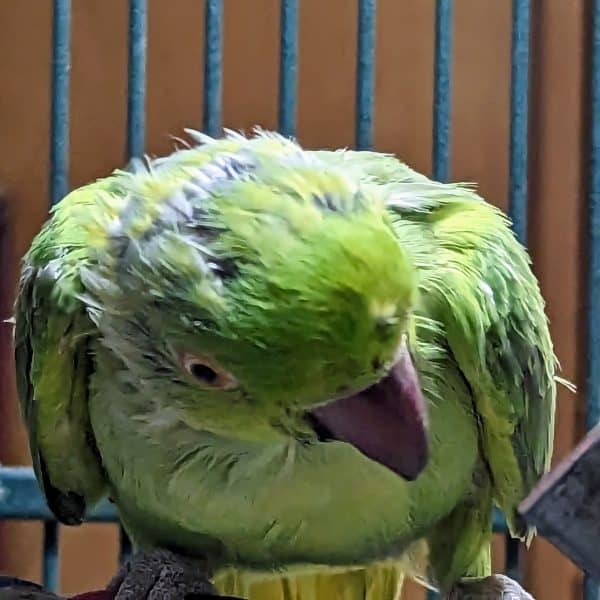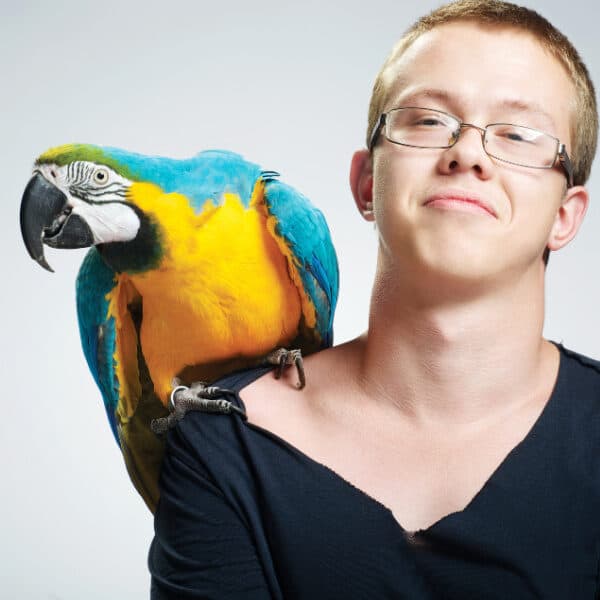Last Updated on by Mitch Rezman
The Cockatiel is the smallest and is actually a miniature Cockatoo, and is from Australia.
The only bird more popular is the parakeet (budgie).
The Cockatiel is biologically classified as a genuine member of Cacatuidae because they share all of the Cockatoo family’s biological features.
They are the only Cockatoo species and can sometimes reproduce by the time they are one year old.
The Cockatiel’s distinctive erectile crest expresses the animal’s state of being. The crest is dramatically vertical when the cockatiel is startled or excited, gently oblique in its neutral or relaxed state, and flattened close to the head when the animal is angry or defensive.
The crest is also flat but sticks outward in the back when the cockatiel is trying to appear flirtatious.
The Cockatiel has long tail feathers making almost up half of its body length.
At 12 to 13 inches, the Cockatiel is the smallest and only parakeet type (long-tailed parrot) of the Cockatoo species.
The “Normal Grey,” or “Wild-type” cockatiel’s plumage is mostly grey with bright white flashes on the outer edges of each wing.
The male’s face is yellow or white, while the face of the female is mostly grey or light grey, and both sexes feature a round orange area on both ear areas, often referred to as “cheek patches.”
This orange color is generally bright in adult males and often muted in females. Visual sexing may be possible.
Cockatiels can generally live 15-20 years, and ages as old as 30 have been reported.
They are social birds and prefer areas with a lot of activity during the day. Young hand-fed Tiels are more suited for physical contact when it comes to choosing one as a pet.
They like to sleep privately on a regulated basis. A good night’s sleep in an area with very little noise or distractions is important. At least twelve hours of sleep is typical for a cockatiel. Less sleep can cause sickness and irritability.
Most cockatiels enjoy looking at themselves in mirrors and will engage in the activity for hours.
Cockatiels that are exposed to mirrors perceive their reflections as their mates so if you want your ‘tiel to be interested in you, then don’t give it a mirror.
Cockatiels are popular for amateur parrot breeders along with Parakeets. They are relatively easy to breed (compared to other parrots) and the costs for equipment are low.
A clutch can consist of 4-7 eggs, each approximately the size of one’s thumbnail.
Eggs are laid once every two days and incubated for 18-22 days.
Hatchlings fledge between 4-5 weeks old and wean between 8-10 weeks old. Babies may often be gently handled while in the nest or removed for hand-feeding at 2 or 3 weeks old to help them become more tame and trusting.
Puberty (adolescence) is reached around 9 months of age while adulthood is reached around 1 year and 9 months in males and/or 15-18 months in females.
Male and female cockatiels both take part in raising their young (not usual with many parrots).
Cockatiels are the only members of the parrot family that do not regurgitate and feed their partner, thus both male and female cockatiels incubate the eggs and raise their young together, where the male usually sits at night and the female during the day, but it can vary.
Some female cockatiels also lay eggs without fertilization, You may know your cockatiel is getting ready to lay eggs if you hear them make mating calls. You will know this noise because it is short chips repeated rapidly. The bird will also get low to the ground, slightly spread her wings, and bounce as she is making sounds.
Once the cockatiel has laid her eggs she will sit on it and protect it. Be careful, even the sweetest cockatiel will attack to protect her eggs.
After up to a month or more the cockatiel will abandon the eggs.
To prevent laying, we recommend making sure her bird cage has bright lighting 12 hours a day.
Like all parrots, cockatiels of either sex can grow to see their owner or a toy as a mate, engage in courtship and mating behavior including territoriality, and females may lay infertile eggs.
Petting the back of the female cockatiel may inadvertently sexually stimulate the hen, promoting egg-laying; owners seeking to avoid egg-laying should avoid this particular form of bonding.
Keep your hands to the bird’s neck and head only, avoiding stroking the bird’s body as this can promote hormonal behavior and egg laying.
Some common mutations/variations:
Harlequin, Ashenfallow, Bronzefallow (or Brownfallow), Cinnamon, Dilute, Dominant silver (or Ashen Dilute), Faded, Pearled, Pale-faced, Platinum, Whitefaced, Yellowcheeked, and Yellow-suffused.
Pied Cockatiels with doves, colors of nature.
Written by Catherine Tobsing
Approved by MitchRezman
Author Profile

Latest entries
 Bird & Parrot CareJune 20, 2025Understanding the Best Way to Use Prevue Pets Mimic Me Voice Trainer
Bird & Parrot CareJune 20, 2025Understanding the Best Way to Use Prevue Pets Mimic Me Voice Trainer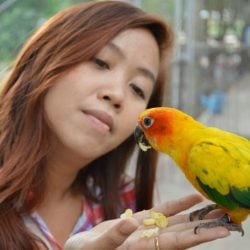 Bird BehaviorJune 6, 2025How Do I Keep My Parrot From Dumping His Food Every Day?
Bird BehaviorJune 6, 2025How Do I Keep My Parrot From Dumping His Food Every Day?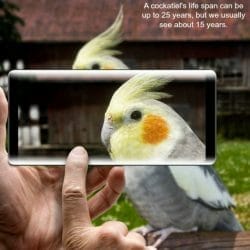 Birds & LightingMay 16, 2025I Am Seeking Clarity About Lighting for My Birds Cage
Birds & LightingMay 16, 2025I Am Seeking Clarity About Lighting for My Birds Cage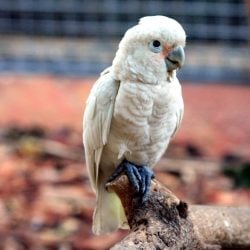 Bird RescueApril 29, 2025How Do We Re-Home a 17 yr Goffin Cockatoo?
Bird RescueApril 29, 2025How Do We Re-Home a 17 yr Goffin Cockatoo?
